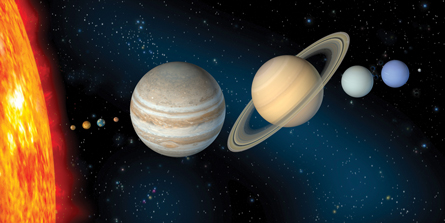Module 5—Circular Motion
Lesson 3—Kepler's Three Laws of Planetary Motion
 Get Focused
Get Focused

© Andrea Danti/shutterstock
Astronomy is the science of celestial objects, such as the planets, stars, galaxies, and other objects outside Earth’s atmosphere. In particular, astronomy concerns the evolution and motion of celestial objects that provides valuable information about the developing universe. Today’s astronomical data is vast, with high-quality data being gathered by instruments like the Hubble Space Telescope. This is a change from the hilltop observations made with the unaided eye prior to Galileo’s innovative use of the telescope. The seventeenth century saw astronomy take a giant leap forward when Johannes Kepler's three laws successfully described the motion of the planets. Soon after Kepler’s descriptions of planetary motion had been completed, Sir Isaac Newton’s explanation of planetary motion followed. Astronomy had officially become a crowning achievement of western science. Exactly how did people come to understand the motion of the solar system in the 1600s?
As you work through this lesson, keep this question in mind:
- How did Kepler’s laws help calculate the position of the planets as they orbited the Sun?
 Module 5: Lesson 3 Assignments
Module 5: Lesson 3 Assignments
Your teacher-marked Module 5: Lesson 3 Assignment requires you to submit a response to the following:
- Try This—TR 1, TR 2, TR 3, TR 4, TR 5, TR 6, TR 7, TR 8, and TR 9
You must decide what to do with the questions that are not marked by the teacher.
Remember that these questions provide you with the practice and feedback that you need to successfully complete this course. You should respond to all the questions and place those answers in your course folder.
 Watch and Listen
Watch and Listen
Watch this video about Johannes Kepler, both his life and his life’s work.